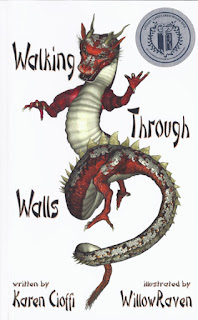As with any occupation or craft, it's important to continue to sharpen your skills. Reading a variety of resources throughout the year is helpful. Here are two recently released resources for writers.

What are the secrets for writing a great ending for your novel? How do you leave readers so satisfied that they'll want another book by you—right now? What tools and techniques can shape your last fifty pages into a powerful, unforgettable experience?
In this book, International Thriller Writers Award winner and #1 bestselling writing teacher James Scott Bell reveals:
• The five types of endings.
• What needs to happen in Act 3.
• How to use the Ah and Uh-Oh emotional wallops.
• A simple technique for crafting twist endings.
• The most important secret of all—resonance.
• The Stew, Brew, Accrue, Do brainstorming method.
• The best way to tie up loose ends.
• The most common ending mistakes, and how to avoid them.
And more. Read this book and you will come away with a thorough knowledge of why great endings work and how to create them for every novel you write.
The bestselling Emotion Thesaurus, often hailed as “the gold standard for writers” and credited with transforming how writers craft emotion, has now been expanded to include 55 new entries!
One of the biggest struggles for writers is how to convey emotion to readers in a unique and compelling way. When showing our characters’ feelings, we often use the first idea that comes to mind, and they end up smiling, nodding, and frowning too much.
If you need inspiration for creating characters’ emotional responses that are personalized and evocative, this ultimate show-don’t-tell guide for emotion can help. It includes:
- Body language cues, thoughts, and visceral responses for 130 emotions that cover a range of intensity from mild to severe, providing innumerable options for individualizing a character’s reactions
- A breakdown of the biggest emotion-related writing problems and how to overcome them
- Advice on what should be done beforedrafting to make sure your characters’ emotions will be realistic and consistent
- Instruction for how to show hidden feelings and emotional subtext through dialogue and nonverbal cues
- And much more!
What are some of your favorite resources? How often do you read books on writing craft? What is the best piece of advice you've found within the pages of a book that has changed your writing?
Cheryl C. Malandrinos is a freelance writer and editor. She is the author of Little Shepherd, A Christmas Kindness, Macaroni and Cheese for Thanksgiving, and Amos Faces His Bully. A blogger and book reviewer, she lives in Massachusetts with her husband and two daughters. She also has a son who is married. Visit Cheryl online at http://ccmalandrinos.com and her children’s book blog at https://childrensandteensbookconnection.wordpress.com



